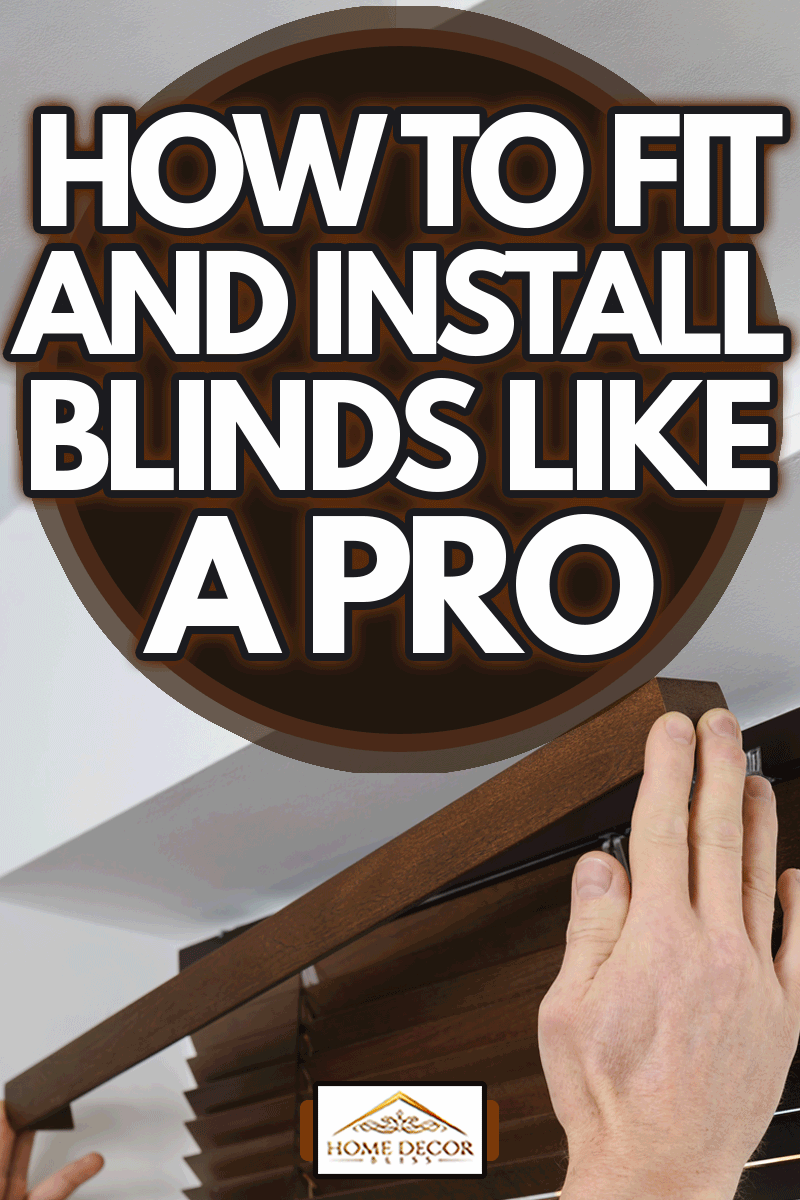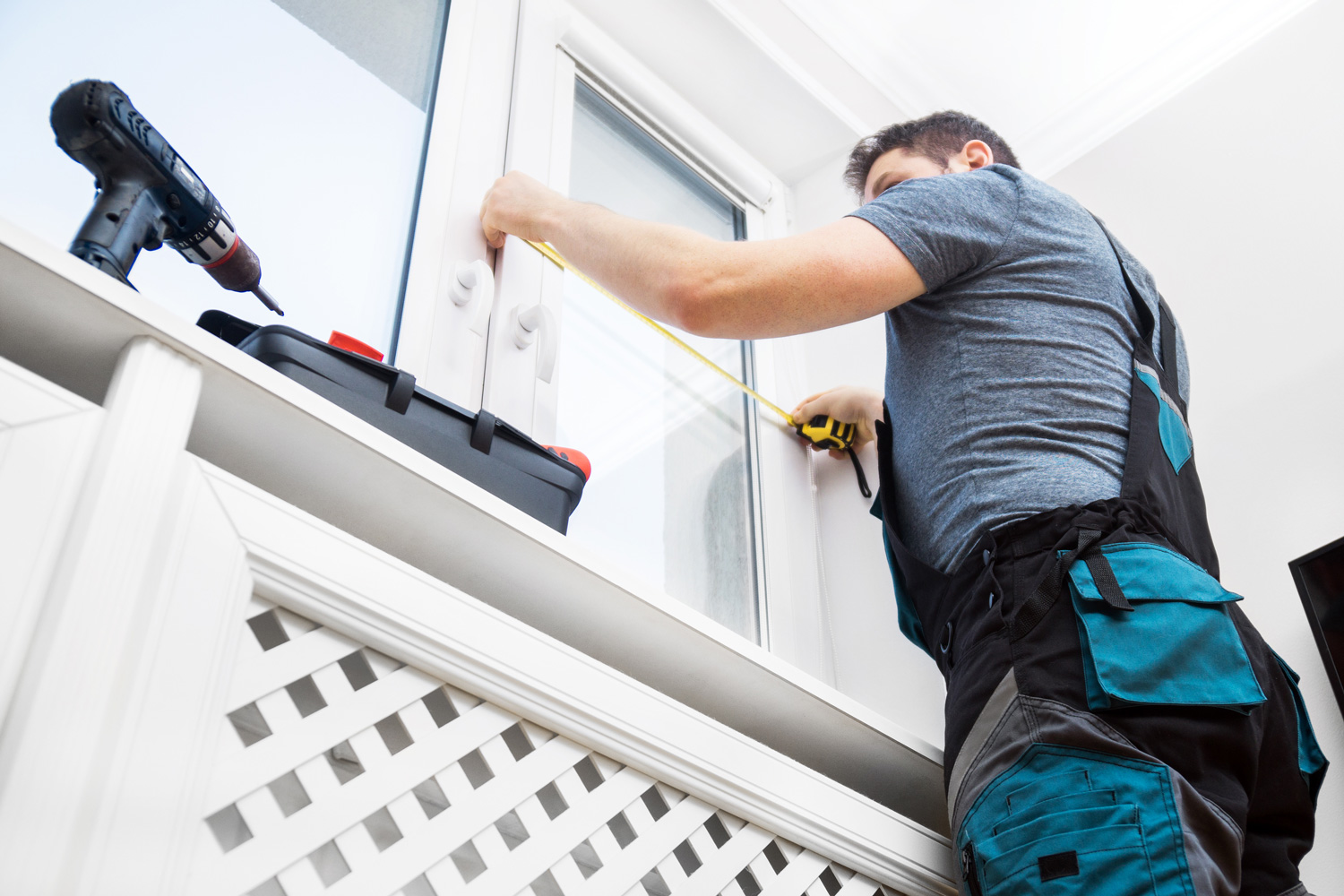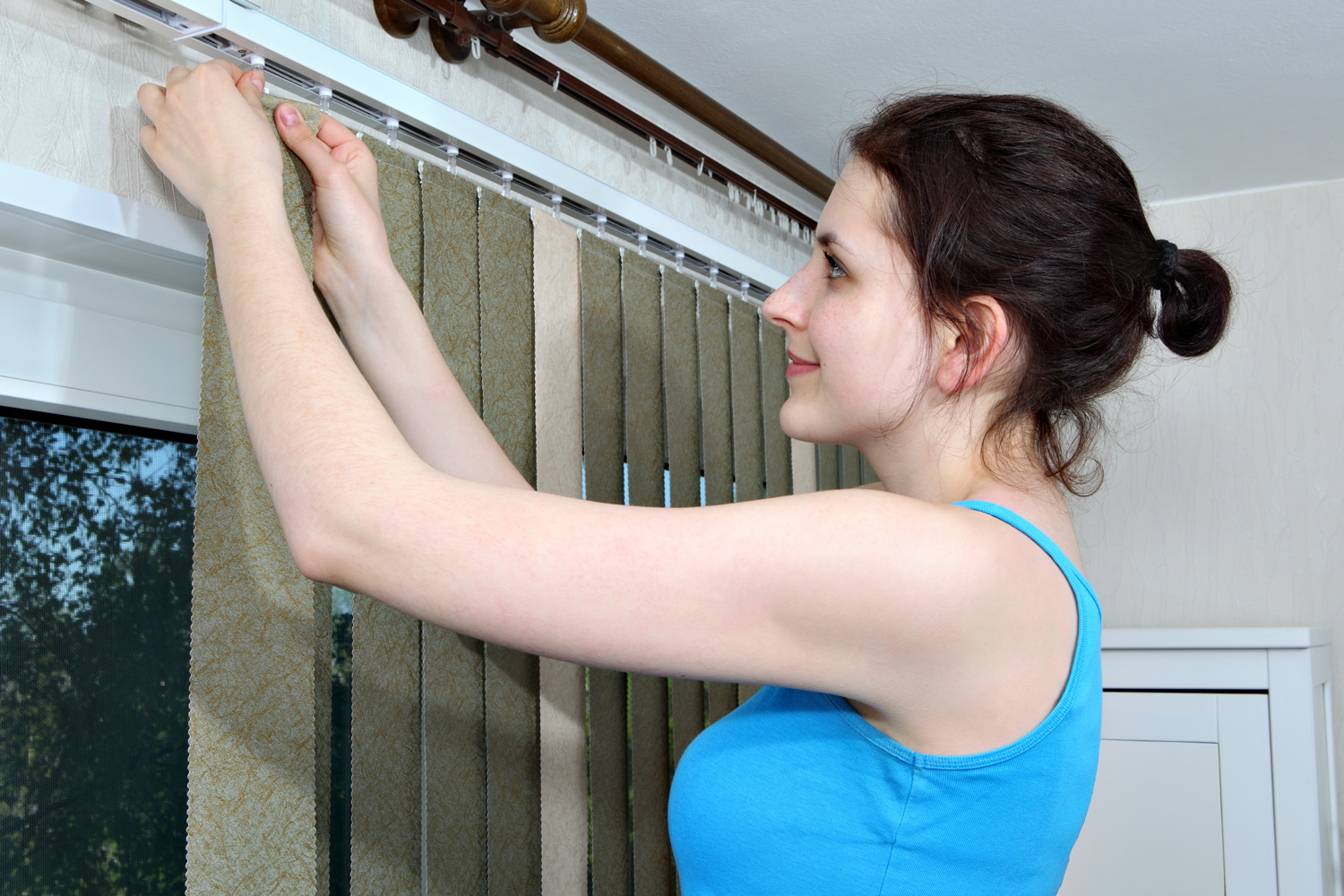Blinds offer privacy and can help keep the heat out of your home. While this may seem like a difficult task to do on your own, it's possible to install blinds yourself. If you feel overwhelmed with putting blinds up, you've come to the right place. We've done the research and can tell you the steps for doing this task by yourself!
To install blinds, you should follow the steps below:
- Measure your windows and purchase the correct size blinds.
- Mark your window frame where you will mount your blinds.
- Use screws to mount your brackets.
- Install the headrail.
- Attach the valence and blind control.
You save yourself money and learn a valuable skill when you install your own blinds. Keep reading to learn more about blind installation, if there are no drill options, and more important information!

Guide To Fitting Blinds

We may include affiliate links and curated AI content to highlight top design styles.
You can mount your blinds in one of two ways. Inside mounts are installed within the window frame. Inside mounts tend to be the more common way to install blinds. Blinds installed in this way are great for layering blinds or shades.
Outside mounts are installed outside of the window frame. For these mounts, you have a lot more freedom on where to put your blinds. Outside mounts can make your windows and rooms appear larger than they are. These blinds can also block out more light.
It's important to decide which mount is best for you. This will alter the way that you install your blinds and where to measure your windows.
1. Measure Windows

You'll need to determine the height and width of your windows. Inside mounts require more precise measurements. You should take multiple measurements for these types of installations so that you purchase the right blinds.
First, measure the width of the inner window frame. Take the measurements from the top, middle, and bottom parts of the window frame.
Then, measure the height of the window frame. You should take three measurements again—this time from the left, center, and right sides of the window.
You should adjust the height based on where you want your blinds to end. If you just want to keep your blinds from touching your window sill, then deduct 1/4 inch from your window height measurement.
You'll buy blinds based on the narrowest of your width measurements and longest of the height measurements.
For outside mounts, you should measure the width and height of your window. To best minimize light entering the blinds, you should measure an additional 1.5 inches horizontally past the window.
For the height, you should measure at least three inches higher than your window. Then, measure down to your window sill, where you want the blinds to stop, or to three inches past the sill. Taking measurements past the end of your window like this will help you keep more light out.
Check out this video to see how to measure an inside mount:
This video shows how to measure your window for an outside mount:
2. Mark Window Frame
Once you have your measurements and the blinds, it's time to mark where to install the brackets for your headrail. Make markings for each end bracket and the center bracket. Take your headrail and place it against your markings. You should make sure that it's level. If it isn't, then you should adjust your markings now.
It's important to make sure that your blinds will have enough room to open and close. For inside mounted blinds, you need to make markings for your brackets at least an inch away from the glass and three inches from the window frame.
3. Mount Brackets
Once you've plotted out where your brackets will go, you can begin drilling. Make pilot holes in the areas that you've marked. Put an anchor in, and then screw in your brackets.
Before fully tightening them, make sure that they open the correct way and are level one last time. Your brackets should open in a way that allows you to slide the headrail in between them.
Remember that anchors are generally necessary when mounting things to drywall, masonry, or tile. The anchor works with the screw to create a more firm grip than a screw could on its own. If you're working with wood, then you might not need to use one.
4. Install Headrail
With your brackets installed, you're now ready to put in your headrail! Make sure your brackets are open, and then slide the headrail into them. Once the railing is to your liking, you can close the brackets. There should be an audible sound to tell you that the headrail is secured.
Depending on what type of blinds you have, you may need to install them now. Gently snap the individual blinds into place. Make sure they are all facing the same direction.
Now it's time to install any valance clips. These clips will snap onto the outer lip of the headrail. Valance clips will hold the valance in place. A valance is a decorative piece that is meant to hide the upper railing for the blinds.
5. Attach Valance And Blind Controls
After the valance clips are installed, you can put the valance up. Line it up with the clips and snap it into place.
If the control for the blinds isn't already installed, then now is the time to install it. Tilt wands come with a small wire hook. Find the section along the headrail where the wand goes and hook it in.
Check out this video to see how to install blinds yourself:
Testing The Blinds
You should test your blinds to make sure that they're installed correctly. With the coverings in the fully extended position, open and close them. They should open and close without bumping into the window glass or window frame.
It's also important to check that the blind controls work as expected. A tilt wand is a thin plastic stick. The wand will open and close the blinds when twisted.
Then, check that your blinds extend as expected. If your blinds have a lift cable, then pull it to retract your window coverings fully. Pull the string again until your blinds open.
As long as everything is installed correctly, you're done! However, if you notice any problems, you'll have to fix them. One easy fix is if your horizontal blinds are too long.
In these instances, you can remove the individual blinds that you don't want. Then, raise the bottom rail to meet the new bottom blind. Twist the extra string into the railing and secure it. The bottom railing should come with plugs to help you do this. If it doesn't, you can use tape instead.
Do I Need A Drill To Install Blinds?

Drilling is one of the best ways to install blind fixtures in your home permanently. However, there are ways to install blinds that don't involve drilling! These options are excellent for those who are renting or who don't wish to put holes in their walls.
You can utilize command hooks or tension rods to install curtains or blinds. In fact, there are even blinds that have tension rods built in. These will install right within the window frame. Many are adjustable, so one window covering may work for multiple different-sized windows.
Check out these no-drill blinds on Amazon.
Need more no-drill advice? You should check out this post: How To Hang Blinds Without Drilling Holes [4 EASY methods]
How Much To Get Blinds Installed Professionally?
If you have a lot of windows or would rather have someone help you, you can have a professional install them instead. It can cost anywhere between $200 and $1,250 to have someone come in and do it for you.
The cost will depend on a few factors. Things that can affect this cost include the type of blinds, the number of windows, and the area in which you live.
In Closing

Installing blinds can be accomplished at home without the help of a professional. To do this successfully, you need to make sure that you install your blinds straight and can drill into your wall. Don't forget to use anchors when you put the screws in!
Looking for more? Check out the posts below:




![Motorized roller shades in the interior. Automatic roller blinds beige color on big glass windows, How To Install Lutron Serena Shades [Step By Step Guide]](https://homedecorbliss.com/wp-content/uploads/2022/11/Motorized-roller-shades-in-the-interior.-Automatic-roller-blinds-beige-color-on-big-glass-windows-600x400.jpg)